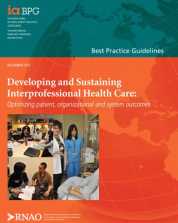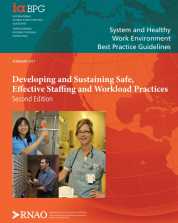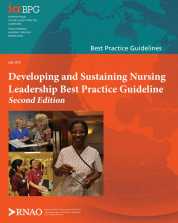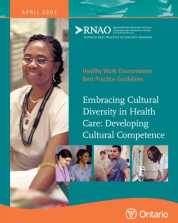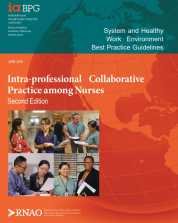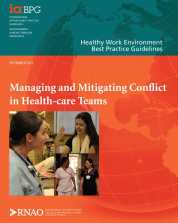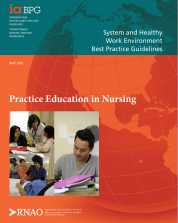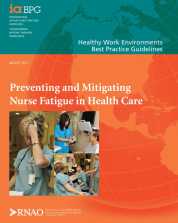The purpose of this best practice guideline (BPG) is to provide evidence-based individual, organization, education, and system/policy recommendations to: 1) enhance the capacity of all individuals involved in the implementation of an eHealth solution within a health care organization; 2) establish suitable infrastructures to support eHealth education needs; and, 3) facilitate technology-enabled health system transformation.
The purpose of this best practice guideline (BPG) is to foster healthy work environments.
The purpose of this best practice guideline (BPG) is to inform staffing and workload recommendations that can be implemented to benefit patients, nurses and other health-care providers, and organizations, as well as research, education, health-care policy, and systems. The goal of this guideline is to assist nurses, nursing leaders, and senior management groups across practice domains and settings to create healthy work environments through safe, effective staffing and workload practices.
The purpose of this best practice guideline is intended to assist nurses and others performing both formal and informal nursing leadership roles from the point-of-care to the board room, across a variety of practice domains and settings.
The purpose of this best practice guideline (BPG) is to promote a healthy work environment for nurses by identifying best practices for embracing diversity within health care organizations.
The purpose of this best practice guideline (BPG) is to strengthen collaborative practice among nurses, because effective collaborative practice is essential for working in health-care organizations.
The purpose of this best practice guideline (BPG) is to manage and mitigate interpersonal conflict among healthcare teams with the view that while some conflict is preventable, healthy conflict can also be beneficial.
The purpose of this best practice guideline (BPG) is to provide evidence-based recommendations that promote and sustain the undergraduate nursing student’s application of knowledge to practice in a variety of clinical learning environments. The guideline explores the relationships among and between students and nursing educators, nursing staff, preceptors and diverse health-care team members, and it considers their influence on the quality of practice education, professional socialization and nursing excellence.
The purpose of this best practice guideline (BPG) is to identify and describe: practices that result in preventing and mitigating fatigue for nurses and other health-care professionals; system resources that support practices to prevent fatigue; organizational culture, values and resources that support effective practices to prevent fatigue; personal resources that can be used to prevent or mitigate fatigue; and anticipated outcomes when fatigue is effectively managed.
